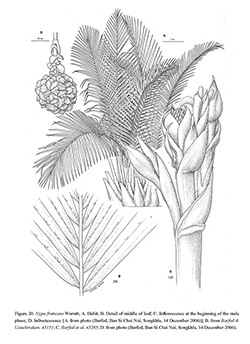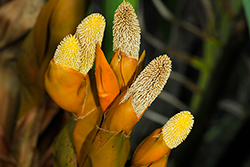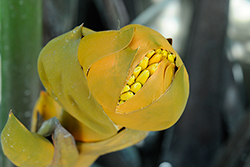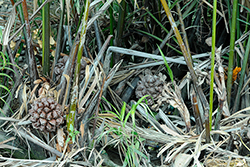e-Flora of Thailand
Volume 11 > Part 3 > Year 2013 > Page 456 > Arecaceae > Nypa
Nypa fruticans Wurmbwfo-0000252566
Verh. Batav. Genootsch. Kunsten. 1: 349. 1779.— Nipa fruticans (Wurmb) Thunb., Kongl. Vetensk. Acad. Nya Handl. 3: 231. 1782, orth. var. Fig. 20.
Accepted Name : This is currently accepted.
Synonyms & Citations :
Description : Creeping tree growing horizontally, and bifurcating at more or less regular intervals. Stem covered by marcescent leaves and persistent leaf bases above ground. Leaves 4–7 in crown, rarely more; sheath and petiole 1.3–1.8 m long; rachis 6–7 m long; pinnae 70–80 per side; the largest ones, the middle of the leaf up to 1.2 m long. Inflorescences 0.9–1.7 m long; peduncle 60–90 cm long, terete; prophyll approximately 30-40 cm long; peduncular bracts 20–30 cm long; rachis 30-80 cm long, rachis bracts tubular; first order branches 5–10; terminal head of female flowers globose, 6–8 cm diam.; male rachillae 7–12 cm long; female flowers with perianth 0.3–0.4 cm long, carpels 0.8–1.1 cm long, stigmatic opening 0.2–0.3 cm long, covered by viscid droplet at anthesis; male flowers much smaller than female flowers, perianth similar in size and shape; common stalk of three stamens 0.4–0.5 cm long. Fruit obovoid, angled, dark brown, 8–11 by 6–8 cm.
Thailand : CENTRAL: Krung Thep Maha Nakhon (Bangkok), Samut Sakhon; SOUTH-EASTERN: Trat; PENINSULAR: Phatthalung, Songkhla, Satun.
Distribution : Sri Lanka across SE Asia to Tropical Australia and the Solomon Islands in the East.
Ecology : Restricted to mangrove. Early pollination studies concluded drosophilid flies to be the most likely pollinators (Essig 1973). However, recent investigations have revealed the putative importance of other functional groups of insects such as muscid flies, Apis bees,Trigona bees and nitidulid beetles in transferring pollen grains (Fong 1987; Eg Hoppe 2005).
Vernacular : Chak (จาก); at-ta (อัตต๊ะ)(Malay-Peninsular).
Uses: Multiple purposes: thatch, edible endosperm, sugar tapping. This species has a large potential in production of bioethanol.
Conservation Status: Of little immediate concern. However the ecosystems services rendered by the extended Nypa forests in Peninsular Thailand are under threat from habitat destruction.
Notes: A keystone species in estuaries and the only palm that can thrive in the tidal zone where it is exposed to fluctuating salinity and oxygen poor substrates. Recent population genetic studies have revealed the possible clonal structure of Nypa (Jian et al. 2010; Stie Tommerup 2009). Tralau (1964) designated the illustrations in Rumphia 2: plates 164 & 165 (1847) as type.




